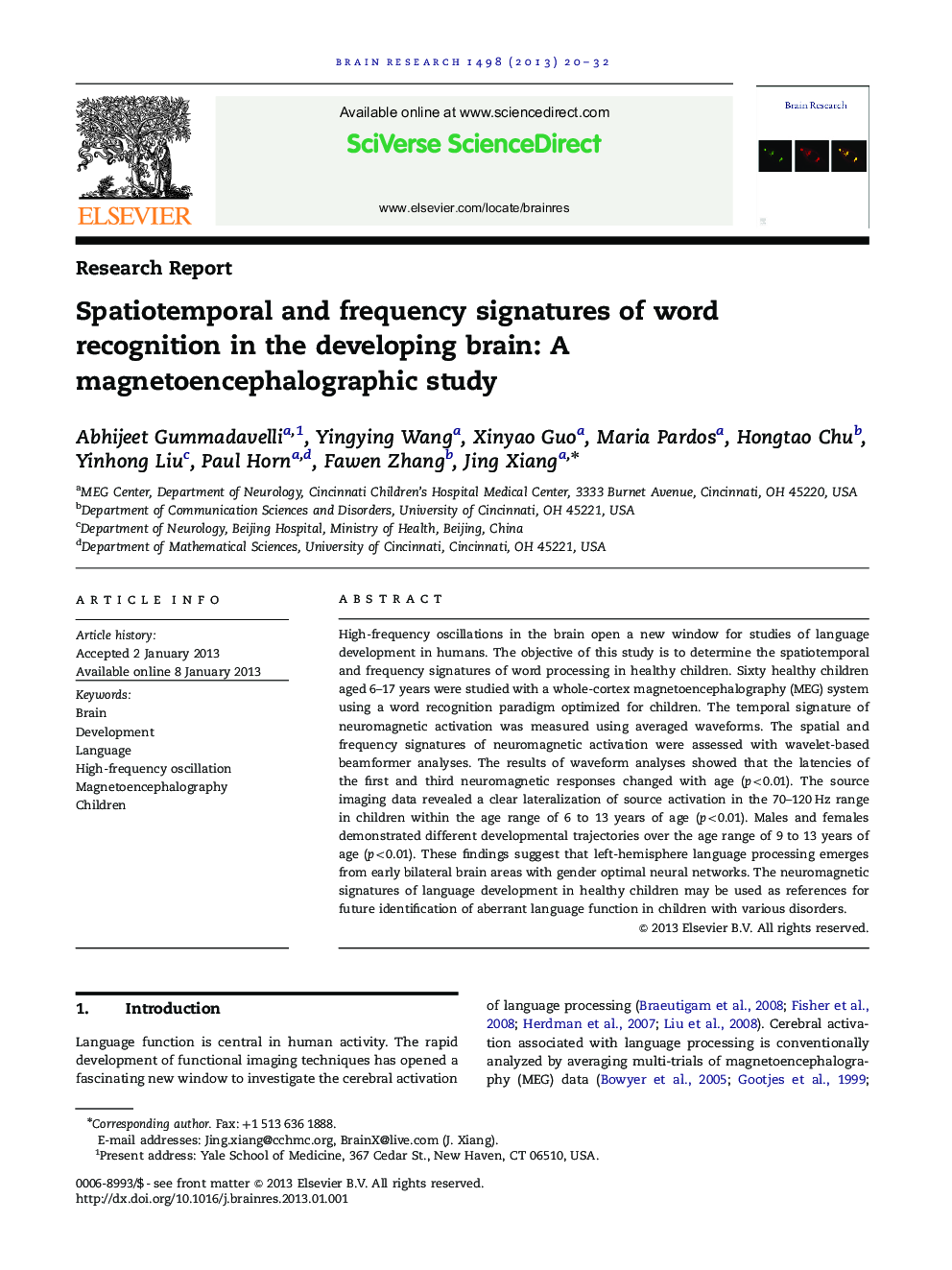| Article ID | Journal | Published Year | Pages | File Type |
|---|---|---|---|---|
| 4324834 | Brain Research | 2013 | 13 Pages |
High-frequency oscillations in the brain open a new window for studies of language development in humans. The objective of this study is to determine the spatiotemporal and frequency signatures of word processing in healthy children. Sixty healthy children aged 6–17 years were studied with a whole-cortex magnetoencephalography (MEG) system using a word recognition paradigm optimized for children. The temporal signature of neuromagnetic activation was measured using averaged waveforms. The spatial and frequency signatures of neuromagnetic activation were assessed with wavelet-based beamformer analyses. The results of waveform analyses showed that the latencies of the first and third neuromagnetic responses changed with age (p<0.01). The source imaging data revealed a clear lateralization of source activation in the 70–120 Hz range in children within the age range of 6 to 13 years of age (p<0.01). Males and females demonstrated different developmental trajectories over the age range of 9 to 13 years of age (p<0.01). These findings suggest that left-hemisphere language processing emerges from early bilateral brain areas with gender optimal neural networks. The neuromagnetic signatures of language development in healthy children may be used as references for future identification of aberrant language function in children with various disorders.
► We studied neuromagnetic activation associated with word processing in 60 children. ► The spatiotemporal and frequency signatures of word recognition were characterized. ► Language function was gradually lateralizing in children over the age range of 6 to 13 years. ► Neuromagnetic high-frequency signals in 70–120 Hz were highly localized to language areas.
